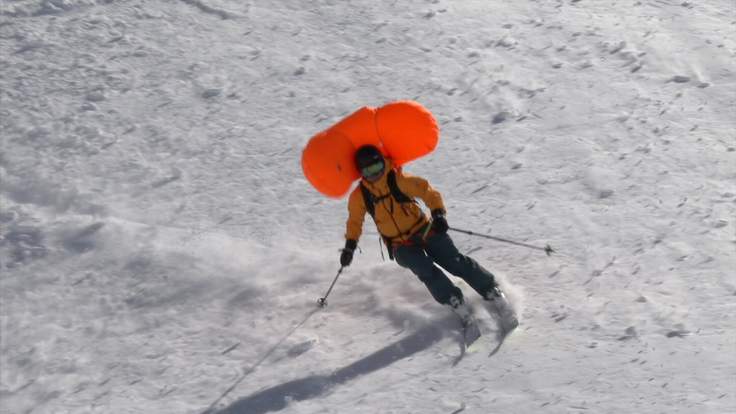

Mountain guides are warning skiers and snowboarders to take care over the Easter holidays following a number of avalanches.
In this week’s Swipe, Angela Barnes went to Chamonix in the French Alps to find out how new technology is being used to help keep people safe in the mountains.
Professional skier Stian Hagen explained how some of the new kit works, including backpacks fitted with an airbag.
“Airbags could be life saving in the event of an avalanche,” he said.
The specialist packs are designed to keep skiers near the snow’s surface during an avalanche, reducing burial depth and increasing survival rate.


Video:
But unlike traditional compressed air cylinder airbag systems that are limited to one deployment per charged cylinder, the Arc’teryx Voltair airbag is powered by a 22.2V rechargeable battery that lets the user deploy the airbag multiple times.
The Pieps Jetforce airbag also features multiple jet-fan inflation.
“So you pull a handle on the airbag and there’s a fan inside that blows up a balloon that actually makes your surface area bigger, so in an avalanche you will be deposited on the top,” explained Mr Hagen.
“The main thing in avalanches is time. After 10 minutes, 60% die from suffocation, so it is all about getting the person out as quickly as possible – and if you are on top of the snow then you are already one step ahead.”
Transceivers, known as beacons, are also essential if people are skiing in an isolated area.

Should you end up buried under the snow, your beacon will emit a signal which can then be picked up by another transceiver.
A person can then follow your signal to find you, and the sound will get louder the closer they get.
Mountain guides say these should be used in conjunction with a snow probe and a shovel, which are used to probe an area and to mark the exact location of a victim.
Some probes now come with integrated transceivers, also emitting beeps to help with the search, and manufacturers of the technology say this can reduce the rescue time by 60%.
Avatech’s Craig Widdicombe says probes can also be used purely for analysis of the snow pack.

“You need to look at the snow pack to determine if there’s a risk of an avalanche or not,” he said.
“We use our SP2 device to dig and look into the layers, this gives us a first indication of what the area is like.
“This probe can take that information in a matter of 10 seconds. It will tell you what the problems are and where you need to look.”
However, technology aside, experts say preventative measures should be taken to avoid any incidents in the first place, as local guide Sébastien Rougegre explained.
“The technology are tools to help us save a situation or reduce the risk, but people should be thinking before they go out,” he said.
“Check the weather forecast, check the avalanche bulletin, talk with the ski patrol and local mountain guides to get feedback on the situation and position up on the mountain.
“We want to prevent the situation of getting caught in an avalanche before it happens.”
This week, you can watch Swipe on Sky News on Friday at 8.30pm, Saturday at 2:30pm, Sunday at 4.30pm, Monday at 10.30am and 4.30pm.
[Source:- Skynews]






